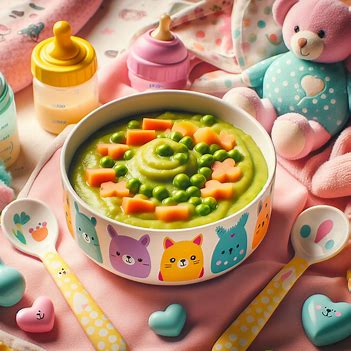Best Value Carriers: Quality and Affordability Combined
When searching for the perfect baby carrier, finding one that strikes a balance between quality and affordability can be a game-changer for many new parents. Best value carriers offer a seamless combination of comfort, safety, and cost-effectiveness.
Balancing Cost and Features
- Material Durability: Look for carriers crafted from durable materials that promise longevity without breaking the bank. Materials like cotton blends or sturdy fabrics offer both durability and comfort.
- Multi-Functional Designs: Opt for carriers that serve multiple purposes. Some carriers double as blankets, nursing covers, or even nappy-changing mats, maximizing their utility.
Budget-Friendly Options without Compromise
- Brand Diversity: Explore lesser-known brands that prioritize quality while being more budget-friendly. These brands often offer innovative designs at competitive prices.
- Second-Hand Options: Consider pre-owned carriers from reliable sources. They can be substantially more affordable without compromising safety or quality.
Features for Value
- Adjustability: Seek carriers with adjustable features like straps, seat width, and height to accommodate growth and ensure a snug fit as the baby develops.
- Versatility: Carriers that support various carrying positions and age ranges offer added value, adapting to the baby’s growth and varying needs.
Community Recommendations
- Parent Communities: Tap into parenting forums or communities where experienced caregivers share insights on budget-friendly yet reliable carriers based on personal experiences.
- Online Reviews: Scan through online reviews to understand firsthand experiences of users with different carriers, particularly focusing on cost-effectiveness and durability.
Assessing Long-Term Benefits
- Investment Mindset: Consider a slightly higher initial investment if it means a carrier that will last through multiple developmental stages, providing better long-term value.
- Return on Investment: Evaluate carriers not just on the upfront cost but on how they cater to your needs and deliver value over an extended period.
Conclusion
Best value carriers do not compromise quality for affordability; they encapsulate smart investments for parents seeking durable, comfortable, and versatile carriers without stretching their budgets. By balancing key features, exploring diverse options, and assessing long-term benefits, finding the best value carrier becomes a strategic and rewarding investment for both the baby and the caregiver.
Baby Carrier Maintenance: Ensuring Longevity and Safety
Maintaining a baby carrier is not only about cleanliness but also about preserving its integrity and safety for your little one. Ensuring proper maintenance prolongs the life of the carrier while upholding safety standards for your baby’s well-being.
Routine Cleaning Guidelines
- Fabric-Specific Care: Follow manufacturer guidelines for washing and cleaning. Different fabrics require specific care routines to maintain their quality.
- Spot Cleaning: For minor spills or stains, use a damp cloth with mild detergent. Ensure it dries thoroughly before use to prevent mould or mildew.
Safety Checkpoints
- Seam Inspection: Regularly examine seams for signs of wear or tear. Weak seams could compromise the carrier’s integrity and safety.
- Buckle and Strap Condition: Test buckles and straps for any signs of weakening or damage. Ensure they fasten securely and adjust properly.
Storage Practices
- Dry Storage: Store the carrier in a dry area away from direct sunlight to prevent fabric fading and maintain its structural integrity.
- Adequate Ventilation: Air out the carrier periodically to avoid trapping moisture, which can lead to mould or mildew growth.
Maintenance for Different Carrier Types
- Soft Carriers: Wash according to guidelines, ensuring that padding and inserts are properly placed after cleaning to maintain their shape.
- Structured Carriers: Pay attention to cleaning the frame or structure parts following specific instructions to avoid damage.
Longevity and Repairs
- Timely Repairs: Address any damages promptly by following manufacturer guidelines or seeking professional repair services to maintain safety.
- Knowing the Limits: Be aware of the carrier’s weight and age limits. Overloading the carrier can strain its structure, compromising safety.
Education and Guidance
- Manual Reference: Keep the carrier’s instruction manual handy to refer to proper cleaning and maintenance guidelines.
- Consultation: When in doubt, reach out to customer service or babywearing experts for guidance on maintaining your specific carrier.
Conclusion
Proper maintenance isn’t just about cleanliness; it’s a crucial aspect of ensuring your baby’s safety while using a carrier. Regular inspection, adherence to cleaning guidelines, and addressing repairs promptly contribute to the carrier’s longevity, making it a safe and reliable accessory for your little one’s comfort and security.
Exploring Innovative Babywearing Solutions
Babywearing has evolved significantly, introducing innovative solutions beyond traditional carriers. These advancements cater to diverse needs, lifestyles, and developmental considerations for both babies and caregivers.
Technological Integration in Carriers
- Smart Fabric Technology: Emerging carriers incorporate smart fabrics offering enhanced breathability, moisture control, and temperature regulation, ensuring comfort for the baby.
- Adjustable Carriers with Tech Features: Carriers equipped with tech-enabled features like weight sensors, Bluetooth connectivity, or ergonomic monitoring assist caregivers in ensuring proper positioning and comfort.
Sustainability and Eco-Friendly Options
- Organic Materials: Increasingly, carriers are made from sustainable, organic materials, reducing environmental impact and ensuring hypoallergenic properties.
- Eco-Conscious Designs: Eco-friendly carriers focus on biodegradable or recyclable components, aligning with sustainable parenting choices.
Specialized Carriers for Unique Needs
- Adaptive Carriers: Designed for babies with specific medical conditions or special needs, these carriers provide additional support and customization options.
- Water-Based Carriers: Carriers suitable for water activities, crafted with quick-dry materials and water-resistant properties, offer versatility for active families.
Fashion and Style in Babywearing
- Designer Collaborations: Fashion houses partnering with baby carrier brands introduce stylish, limited-edition carriers, blending aesthetics with functionality.
- Customizable Carriers: Offering customizable design options, these carriers allow personalization, reflecting the caregiver’s style and preferences.
Cultural and Ethnic Influences
- Ethnic Print Carriers: Inspired by diverse cultures, carriers with ethnic prints celebrate heritage and traditions, catering to families seeking cultural connections.
- Traditional Carriers Reimagined: Traditional baby carriers from various cultures are reinterpreted, merging heritage with contemporary design and comfort.
Integration of Wellness Features
- Yoga and Movement-Inspired Carriers: Combining functionality with wellness, carriers inspired by yoga or movement techniques promote bonding and relaxation.
- Postpartum Support Carriers: Carriers designed to support postpartum recovery, offering ergonomic features and abdominal support for caregivers.
Conclusion
Innovations in baby carriers span technological advancements, sustainability, specialized functionalities, fashion, cultural influences, and wellness aspects. Exploring these innovative solutions offers caregivers an array of choices to align with their unique preferences, needs, and lifestyles while ensuring safety and comfort for their little ones.
Understanding Baby Carrier Regulations and Safety Standards
Ensuring the safety of your newborn in a baby carrier involves understanding and adhering to stringent regulations and safety standards established within the industry. These guidelines are crucial in guaranteeing the well-being and security of both the baby and the caregiver.
Industry Standards and Certification
- ASTM F2907-21: This standard specifies the requirements for soft infant and toddler carriers, outlining criteria for design, performance, and labelling.
- CEN/TR 16512: European standards focus on ergonomic design, emphasizing hip health, and proper positioning of babies in carriers.
Safety and Testing Procedures
- Weight and Durability Tests: Carriers undergo weight tests to ascertain load-bearing capacity and durability under various conditions.
- Mechanical and Chemical Safety Tests: Rigorous checks for small parts, choking hazards, and chemical toxicity ensure carriers meet safety benchmarks.
Ergonomic Guidelines
- Hip-Healthy Designs: Standards emphasize carriers supporting the baby’s natural hip development by maintaining the recommended ‘M’ position.
- Proper Positioning for Baby’s Spine: Ergonomic designs ensure the baby’s spine aligns appropriately, preventing strain or discomfort.
Labeling and User Manuals
- Clear Instructions: Regulations mandate carriers to provide comprehensive user manuals with clear guidelines on safe usage and positioning.
- Age and Weight Recommendations: Labels must include age and weight recommendations for the safe carriage of infants and toddlers.
Compliance and Certification
- Third-Party Certification: Many carriers obtain certifications from recognized bodies, indicating compliance with safety standards.
- Recalls and Updates: Manufacturers stay abreast of safety modifications and issue recalls or updates to align with evolving safety criteria.
Consumer Awareness and Responsibility
- Research and Verification: Caregivers should verify compliance with safety standards before purchasing any carrier.
- Regular Inspection: Periodic checks for wear, and tear, and adherence to guidelines ensure continued safety during use.
Some Recommended Products
Conclusion
Understanding and abiding by these safety standards and regulations significantly contribute to providing a secure and comfortable experience for both infants and caregivers. Compliance with industry-established safety norms ensures that baby carriers meet stringent criteria, fostering a safe environment for your baby’s early development.







